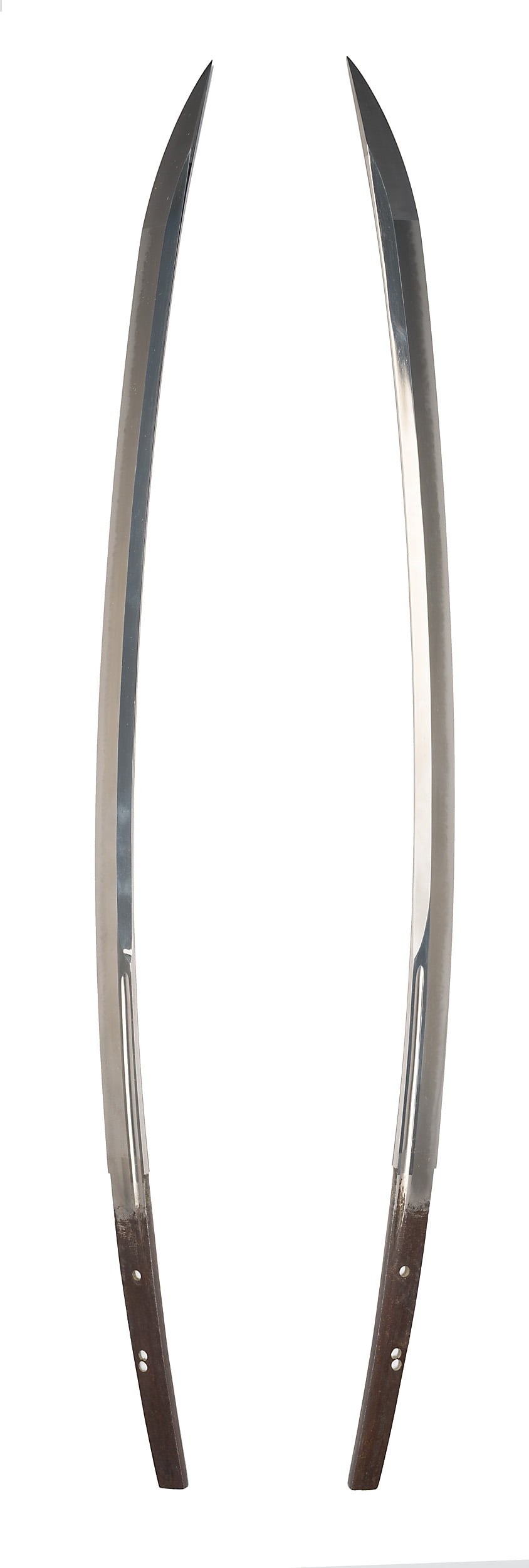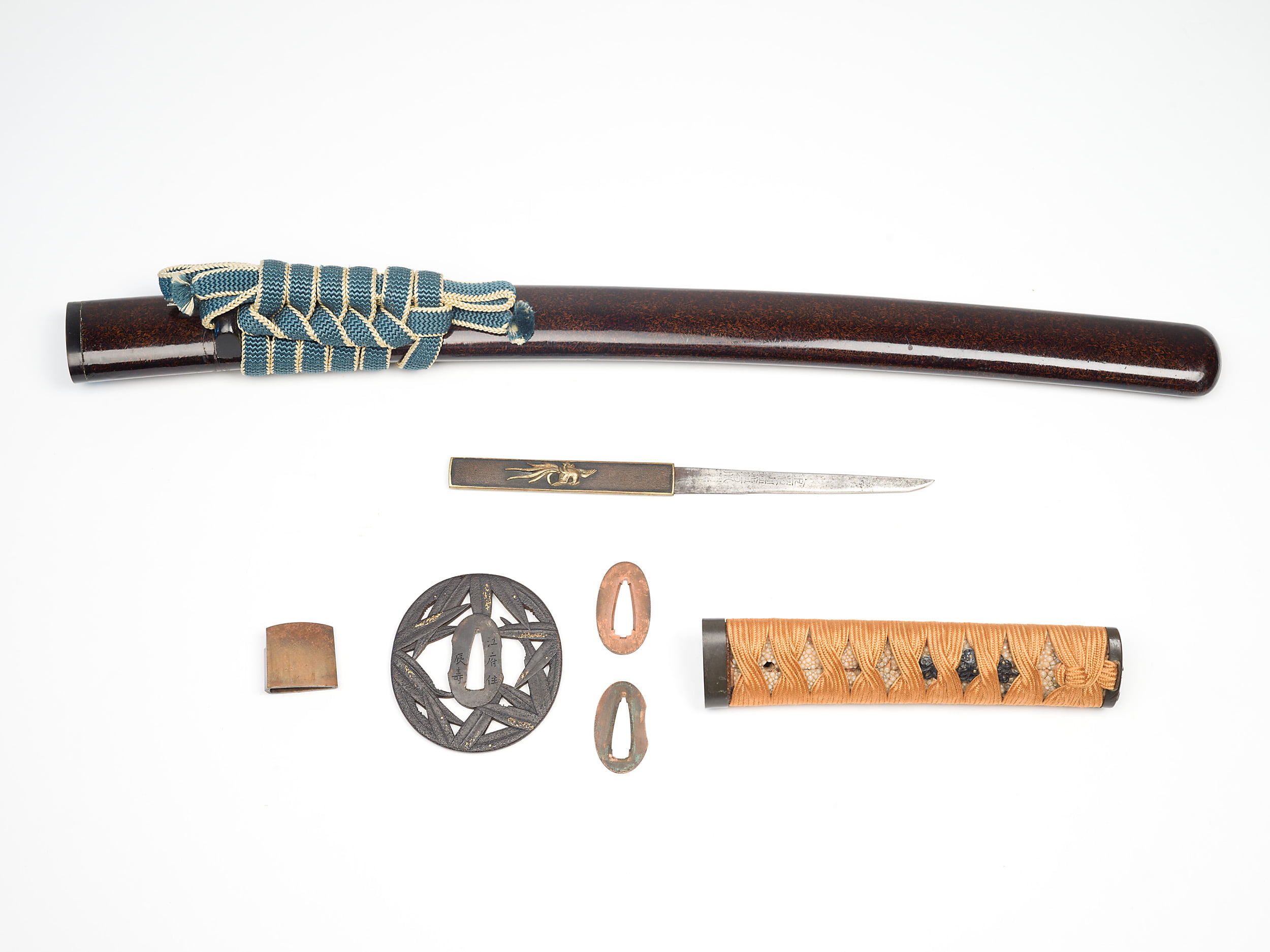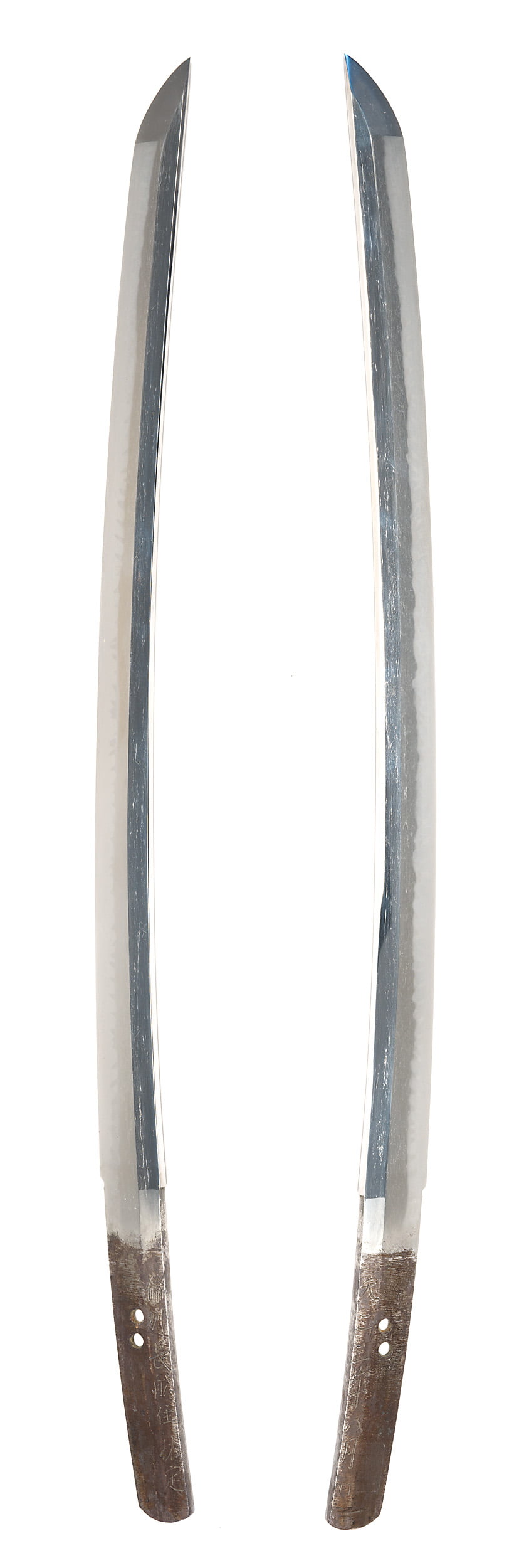The daisho consists of two Japanese swords, a dai-to and a sho-to. The dai-to features a blade length (nagasa) of 62.1cm, crafted in kanmuri-otoshi (Inami) style with a torii-zorri bend (torii-zori). Its back (mune) is characterized by an iori-mune (sato) shape, also known as Gyo-no-mune (Inami). The temper line (boshi & kissaki) exhibits a Midarekomi (Sato) pattern with a very large kissaki (Inami) or O-kissaki. The temper pattern (hamon) is Gunome choji, and the blade features Koshi-hi ura & omote grooves (hi or horimono) and a distinct o-itame-hada grain pattern (jihada).
Dating to the shinto period, the blade is in excellent condition with a flawless polish. The sword tang (nakago) terminates in a kiri-jiri nakago-jiri, with kiri-yasuri file marks (yasuri-me) and three mekugi-ana (peg holes). It bears no signature (mei) but is attributed possibly to later Fuyuhiro.
The koshirae (mounting) includes rayskin (samegawa) on wood for the handle (tsuka), wrapped in gold silk (tsuko-ito). The menuki are adorned with motifs of mountains with clouds, sun, birds in shakudo with gold, and a boat with several people in shakudo and gold. The tsuba is crafted from shibuichi with an ishime-ji surface and is signed. The collar & cap (fuchi-kashira) are in shakudo with a touch of gold, featuring a signed fuchi and elaborate decorations in shakudo, gold, and copper. The blade collar (habaki) is polished copper, and there are two copper washers (seppa).
The sho-to is shaped in shinogi-tsukuri with a flat koshi-zori bend (torii). Its back (mune) is an iori-mune, and the temper line (boshi & kissaki) showcases a chu-kissaki with an omaru-boshi. The temper pattern (hamon) features pronounced choji, and the hada pattern (jihada) is mokume hada.
Also dating to the shinto period, the sho-to is in perfect condition with a fine polish. Its nakago terminates in a kuri-jiri nakago-jiri, with kiri until katte sagari (Sato) file marks (yasuri-me) and two mekugi-ana (peg holes). The signature (mei) is possibly Sukesada.
The koshirae includes rayskin (samegawa) on wood for the handle (tsuka), wrapped in gold/brown silk (tsuko-ito). The menuki are sheets in shakudo with gold plating, while the tsuba features bamboo in shibuichi with an ishime-ji surface, similar to the dai-to tsuba, and is signed. The collar & cap (fuchi-kashira) are in shakudo with gold decorations, each adorned with a demon in takabori. The blade collar (habaki) is copper, and there are two copper washers (seppa).
These pieces originate from the collection of Albert Polster, the former president of the European branch of the NBTHK.




Kunstberatung Zürich AG
Börsenstrasse 27 8001 Zürich Switzerland
VAT Number: CHE-113.608.140
+41 44 381 50 40
contact@kunstberatung-zurich.com
©2025 Kunstberatung Zürich AG No part of this website may be reproduced, distributed, stored in a retrieval system or transmitted in any form or by any means, electronic, mechanical, or otherwise, without the prior permission of Kunstberatung Zürich AG.